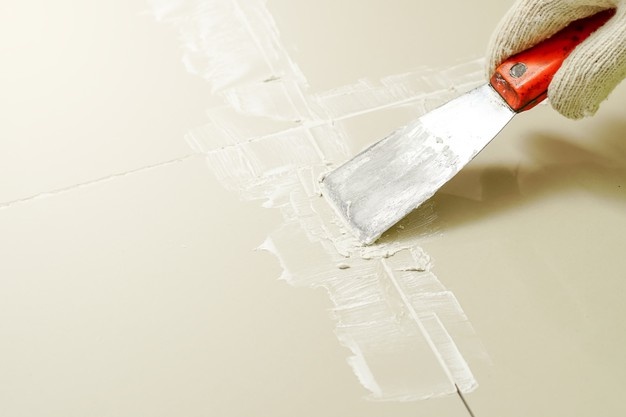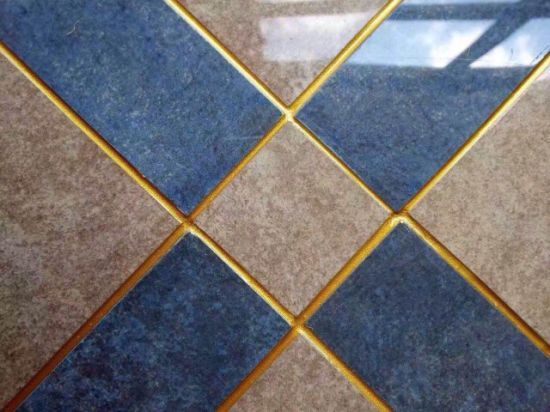Choosing a grout for your tiles can be confusing. Nearly all forms of tiles, ceramic tiles, of all sorts and varieties, use some type of grout to fill in between the tile seams. Making sure that the proper type of grout has been used in order to fill the seams is important in preventing moisture from going down into the underlayment.
Photo Courtesy: Freepik
What is grout?
Grout is used as a filler for the joints between tiles that contributes to both the stability and aesthetics to your floors or walls.
What are the different types of grout?
There are so many types of grout from which to choose. Most grouts are a powdered mix of cement, lime, color pigment, and sometimes sand that hardens when mixed with water and left to cure.
Grout doesn’t only contribute to the aesthetics of your wall. It also offers a number of valuable benefits such as:
- giving your floor or wall a crisp finished appearance.
- keeps dirt and debris from getting in between and under your tile.
- adds rigidity and strength to the tile installation.
There are three main types of grout used by tilers when installing tiles. Each grout type has its own unique properties, making them suitable for specific applications. Let’s take a closer look at these three grout types to find out which one best fits your next tiling project.
Photo Courtesy: Superior Renovations
1. Cementitious Grout
This is the traditional grouting material of choice. Cementitious grout is by far the most popular type and can be used virtually on any tile project. Commonly used in both residential and commercial tile installations, its main components are Portland cement and filler particles with different sizes, colored pigments, and a water-retentive additive.
Cementitious grout comes in a variety of colors, allowing the installer to match their chosen tile. This grout is being mixed with water and applied with a trowel. The water-retentive agent allows the cement to cure slowly for maximum hardness.
Cementitious grout also comes in two types:
- Sanded grout
It includes large sand particles that contribute to its gritty look and feel. It is generally recommended for grout seams that are 1/8 inch wide or more as the sand provides extra bonding power to help prevent cracking. Much care is needed when using sanded grouts on highly polished tiles; the sand particles can easily scratch surfaces.
- Unsanded grout
This grout contains mineral particles that have no noticeable grit for a smoother texture. It is often used in grout seams that are 1/16 to 1/8 inch wide. Any wider, unsanded grout may crack due to the insufficient binding power compared to sanded grout.
Photo Courtesy: Freepik
2. Epoxy Grout
This is entirely different from cementitious grout, as it uses neither Portland cement nor water in the mixing process. It primarily consists of epoxy resin along with silica fillers, pigments, and a hardener. Epoxy grout is an excellent choice for stain resistance and in areas where acids and greases are commonplace, such as kitchens.
While it also has unsanded and sanded varieties, the type of sand used is different from that found in cementitious grout. It sets up relatively faster and is therefore not recommended for amateur tile installers.
Photo Courtesy: Gib Tiling
3. Furan Resin Grout
This type of grout is quite similar to epoxy, but uses a blend of polymers with fortified alcohols, instead of epoxy resins. The name is derived from the furfuryl alcohol included in the grout formula which contributes to its chemical resistance.
Furan grout is commonly used to grout tiles that are frequently exposed to harsh chemicals such as laboratories, distilleries, institutional kitchens, and breweries. Prior to grouting the tiles, they must first undergo a wax coating to protect them from staining. Installing this grout should also be done when the temperatures are between 15ºC and 32ºC so that it cures properly. It’s a bit difficult and tricky to install, hence only experienced tile installers use this for industrial projects.
When mixing furan grout, precautions are needed to avoid inhaling the vapors which are harmful to human health.
Lastly, maintenance and care are key to storing grout. Although some types of grout have a life expectancy of up to 25 years, it still boils down to how it is prepared and stored for future use .
RELATED ARTICLES:
Tips on Choosing the Right Tile Size and Shapes for your Home
5 tips on choosing the right tile for your kitchen
Further Forward: Jaime Machuca on Keeping Tradition Alive Amidst Struggle
CITATIONS:
- Lummis, D. (2021, June 7). 3 Types of Grout to Use When Installing Tiles. GIB Tiling Perth. Retrieved September 23, 2021, from https://www.gibtilingperth.com.au/3-types-of-grout-to-use-when-installing-tiles/.
- Mist, D. (2020, November 26). Types of Grout Used in Tile Installation. Beauty and the Mist. Retrieved September 23, 2021, from https://beautyandthemist.com/2020/11/types-of-grout-used-in-tile-installation/.
- Why You Need Grout When You Install Tile and Stone. Tile Outlets of America. (n.d.). Retrieved September 23, 2021, from https://www.tileoutlets.com/blog/why-you-need-grout-when-you-install-tile-and-stone/.
![]()














